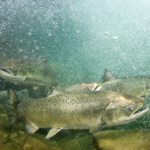If you have a balcony or loggia at home, it is important to make sure that wind and dampness do not penetrate through them home. For insulation of the balcony you will not need a lot of effort, the main thing is here – to choose the right material.
For a long time looking for a good company that has been repairs of Came barriers? You can visit our site and order a barrier repair from us.
The insulation should be easy so as not to create additional severity for ceilings, have low thermal conductivity, but should not be too thick so as not to clutter up the space, must be moisture resistant, waterproof. That’s perhaps all.
There are several options for insulation.
Mineral wool. Layer thickness up to 1.5 cm, selected special in tables depending on the climate.
The surface is protected by a moisture insulation film, the rails are fixed by the grate method, and the voids are filled with mineral wool blocks. All this is closed with a film.
Foam is the most affordable tool for insulation. In addition, it weighs little and takes up places. Disadvantages: fragility, fragility.
You can install glue with the help of the disadvantages with mounting foam. For a beautiful appearance, you can cover with paint or bewitched.
Polistyle foam and foamed foil polyethylene is the third method of thermal insulation of the balcony. Peopolystic – the first layer – has high compression strength. The second component is characterized by a low ability to moisture absorption due to its structure. Elastic, flexible, elastic, durable. The thickness of the first component – from 0.3 to 0.5 cm, second (vapor barrier)-3-5 mm. We cover the walls with panels, stain, seal the gaps of foam, sealants or mastics of polyurethane.
To protect against water, concrete ceilings are most often used by roofing ground. Volgoisolon is increasingly used due to its small thickness-4 mm. Thus, it is not at all difficult to insulate and protect your balcony from moisture.



